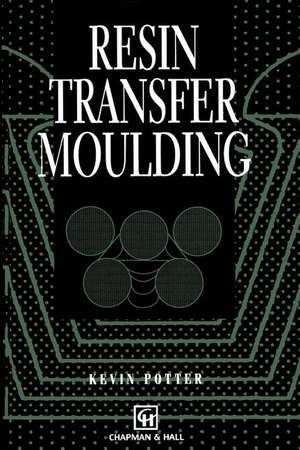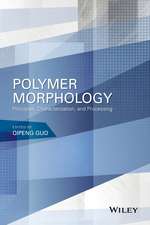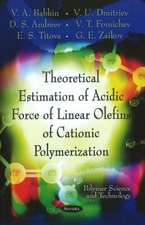Resin Transfer Moulding
Autor K Potteren Limba Engleză Paperback – oct 2011
Preț: 779.57 lei
Preț vechi: 950.70 lei
-18% Nou
Puncte Express: 1169
Preț estimativ în valută:
149.19€ • 155.18$ • 123.16£
149.19€ • 155.18$ • 123.16£
Carte tipărită la comandă
Livrare economică 15-29 aprilie
Preluare comenzi: 021 569.72.76
Specificații
ISBN-13: 9789401064972
ISBN-10: 9401064970
Pagini: 264
Ilustrații: 264 p.
Dimensiuni: 155 x 235 x 14 mm
Greutate: 0.37 kg
Ediția:Softcover reprint of the original 1st ed. 1997
Editura: SPRINGER NETHERLANDS
Colecția Springer
Locul publicării:Dordrecht, Netherlands
ISBN-10: 9401064970
Pagini: 264
Ilustrații: 264 p.
Dimensiuni: 155 x 235 x 14 mm
Greutate: 0.37 kg
Ediția:Softcover reprint of the original 1st ed. 1997
Editura: SPRINGER NETHERLANDS
Colecția Springer
Locul publicării:Dordrecht, Netherlands
Public țintă
ResearchCuprins
1 RTM theory.- 1.1 The basics of flow in RTM processes.- 1.2 RTM theory.- References.- 2 Materials for RTM.- 2.1 Reinforcements.- 2.2 Resins for RTM.- 2.3 Binders.- 2.4 Core materials for RTM.- References.- 3 Reinforcement manipulation and preforming.- 3.1 Introduction.- 3.2 Deformation modes of composite reinforcements.- 3.3 Steps in the preforming process for bound reinforcements.- 3.4 Preforming equipment.- 3.5 Preforming tools.- References.- 4 RTM mould tool design.- 4.1 Introduction.- 4.2 Tooling materials.- 4.3 Requirements for the design of RTM tools.- References.- 5 Production engineering requirements.- 5.1 Working environment.- 5.2 Specific requirements.- 6 Component design for RTM.- 6.1 Specific design features.- References.- 7 Flexible tool RTM.- 7.1 Materials.- 7.2 Materials handling.- 7.3 Tooling design for large area RTM.- Reference.- 8 Thick section RTM.- Reference.- 9 Known applications of RTM processing.- 9.1 Aerospace and defence.- 9.2 Automotive uses.- 9.3 Construction.- 9.4 Electrical and electronic.- 9.5 Industrial and mechanical.- 9.6 Marine.- 9.7 Sports equipment.- 9.8 Transportation.- 10 Troubleshooting RTM processing problems.- Reference.- 11 Suggestions for good practice in the design and development of RTM components.- 12 Costing.- 12.1 Top down costing.- 12.2 Outline costing.- 12.3 Production costing.- Reference.- 13 Quality control/assurance.- 13.1 Documentation requirements.- 13.2 Process control and process monitoring.- 13.3 Specimen documents.- 14 Case study.- 14.1 Introduction.- 14.2 Preform design and tooling.- 14.3 Mould tool design.- Appendix A brief word about patents.- Reference.












